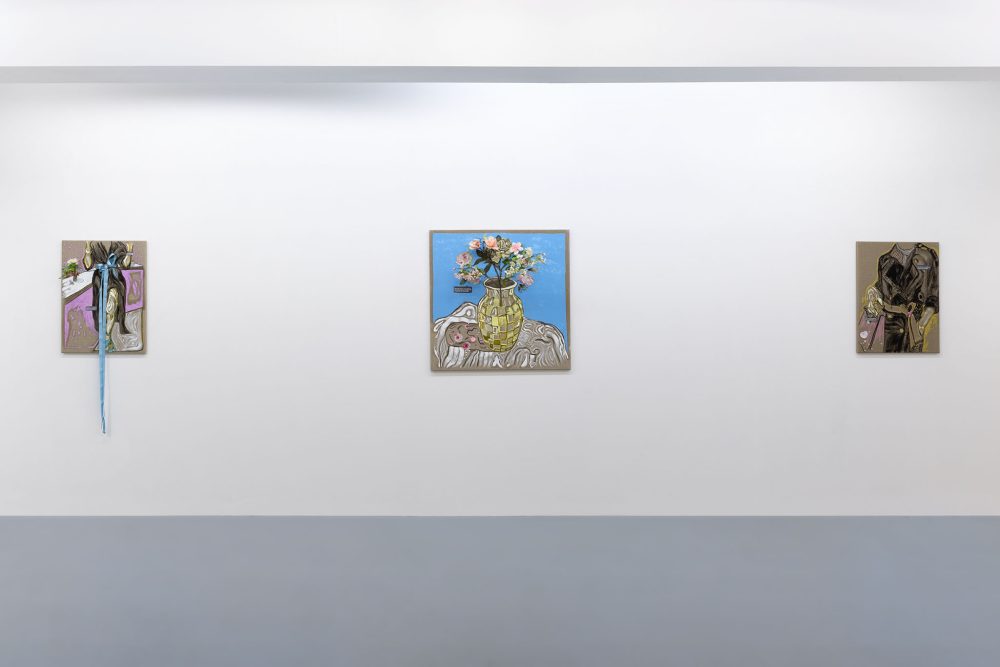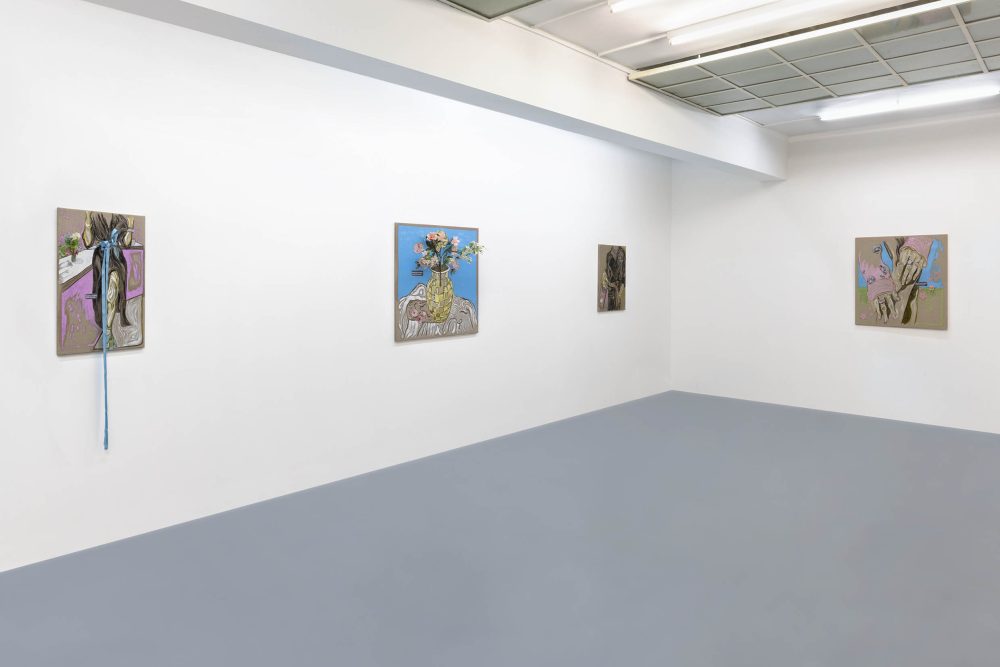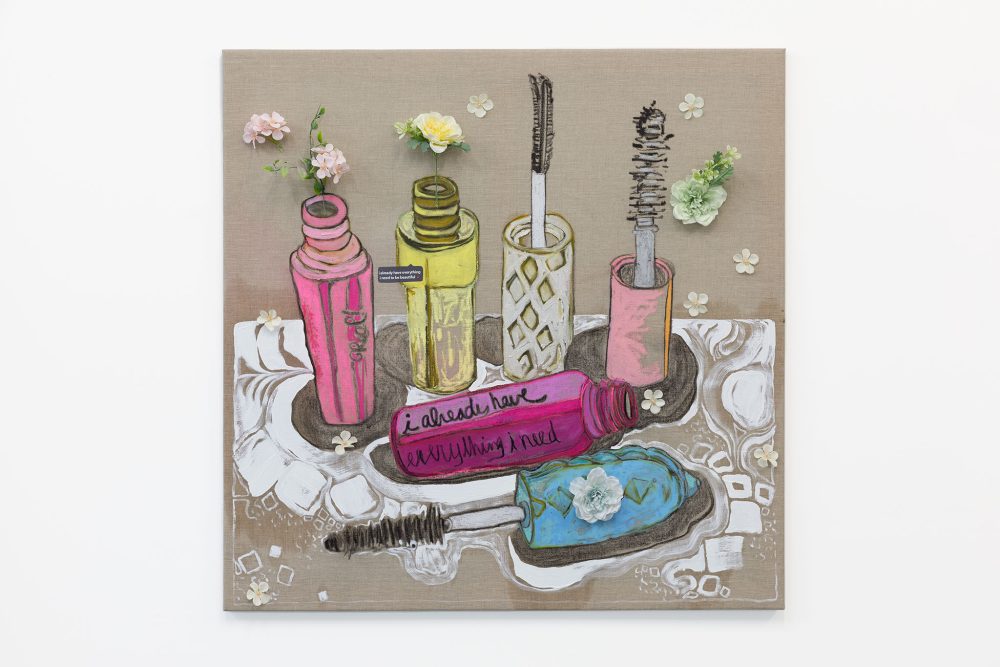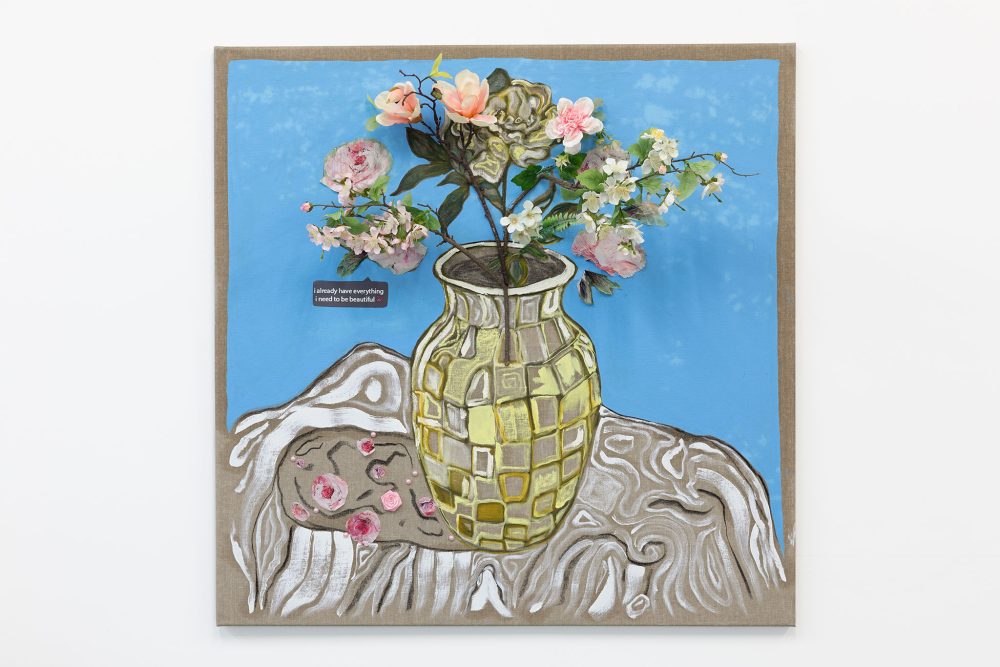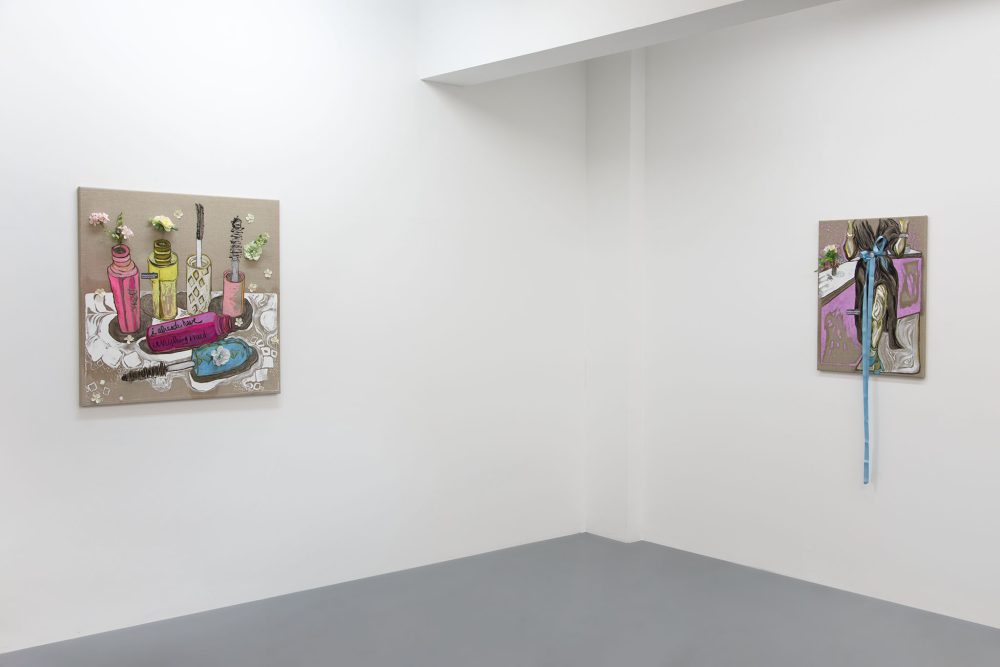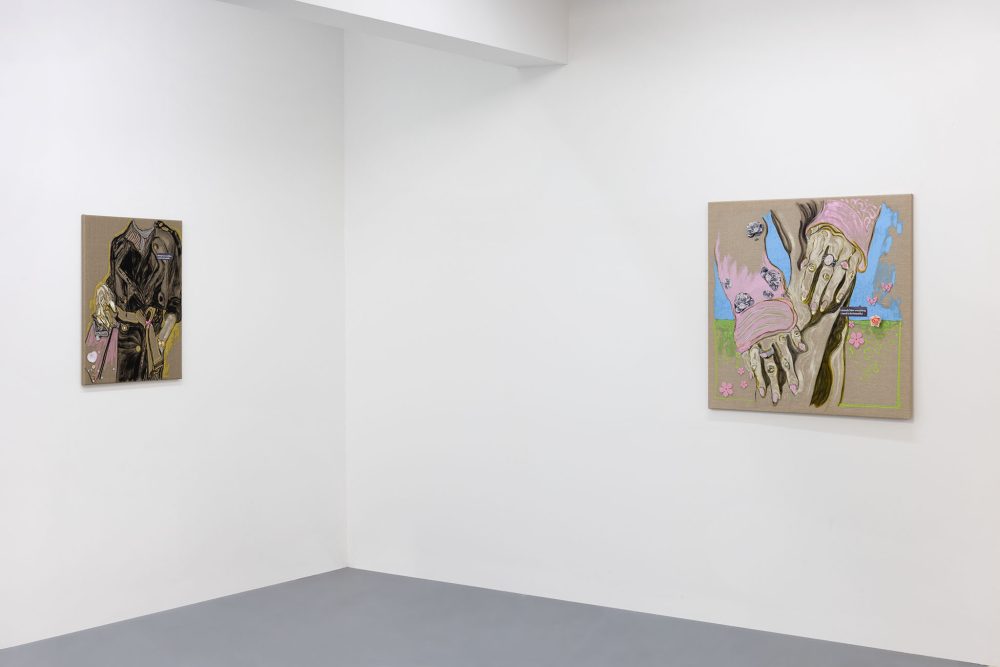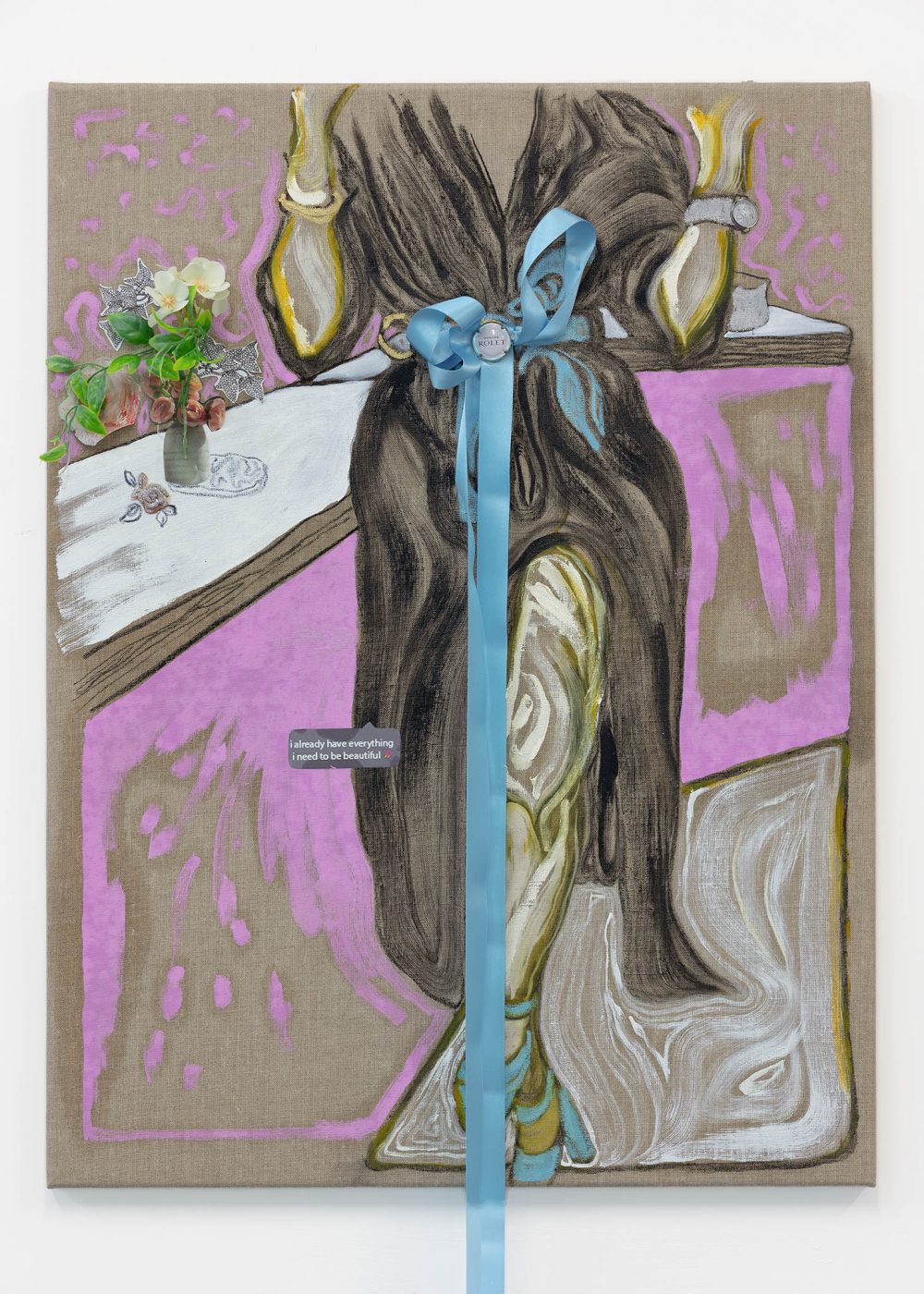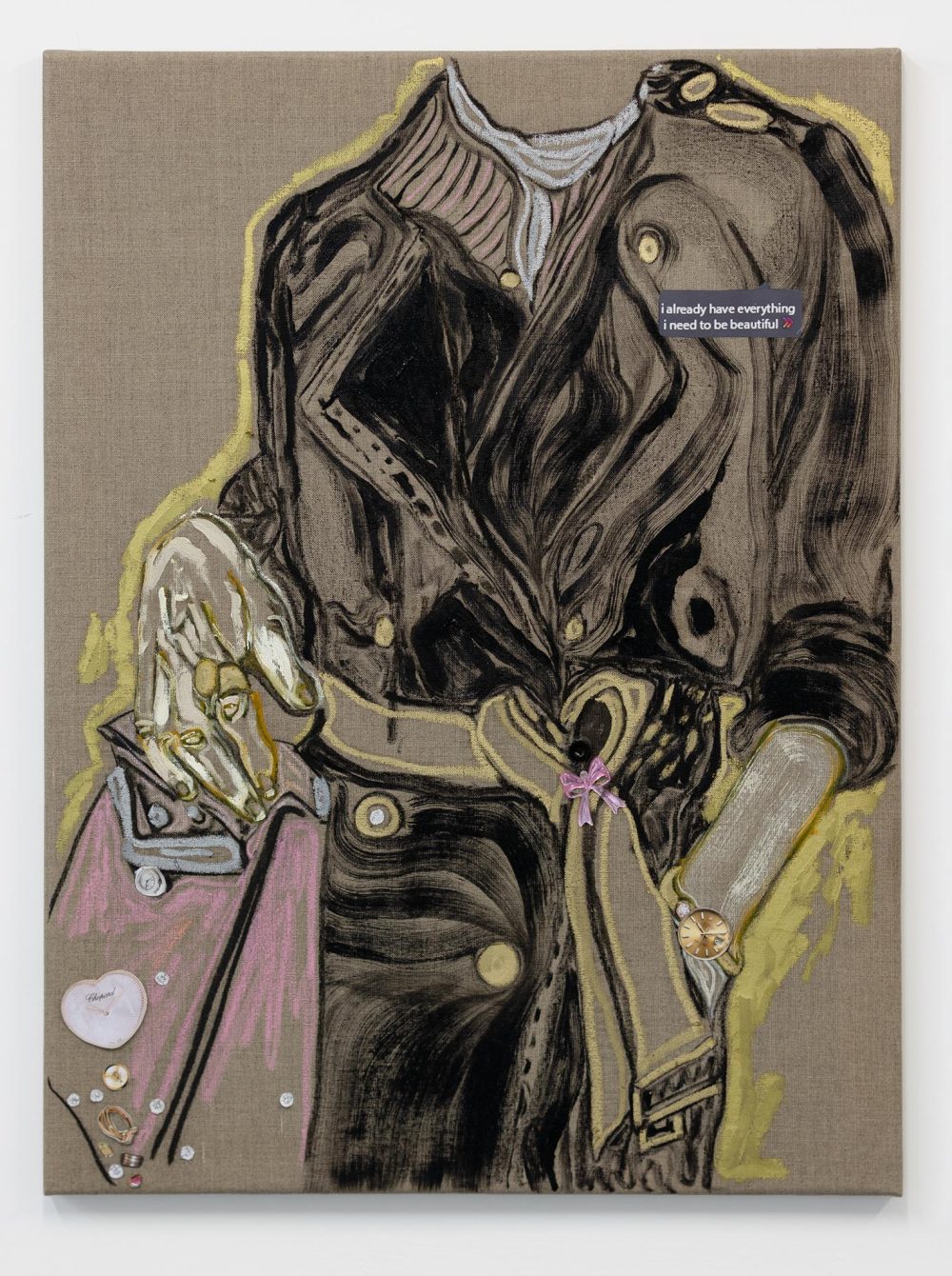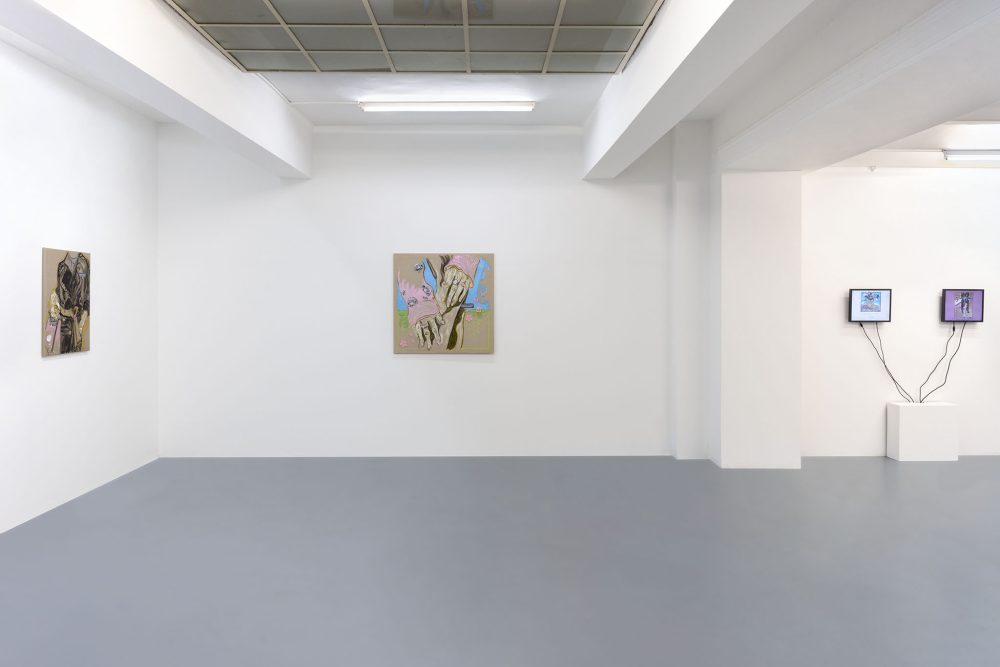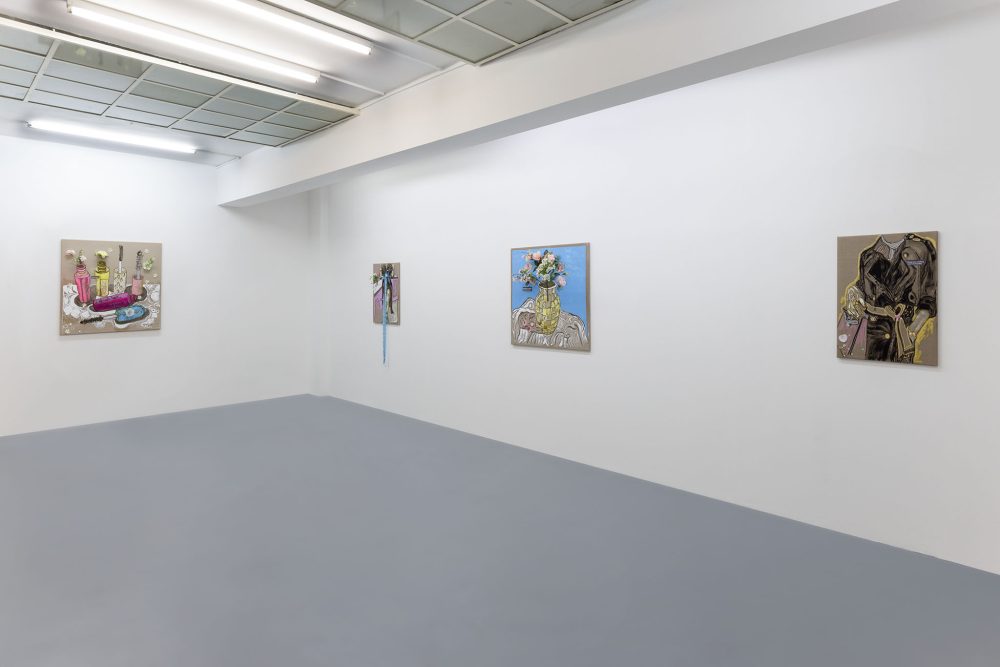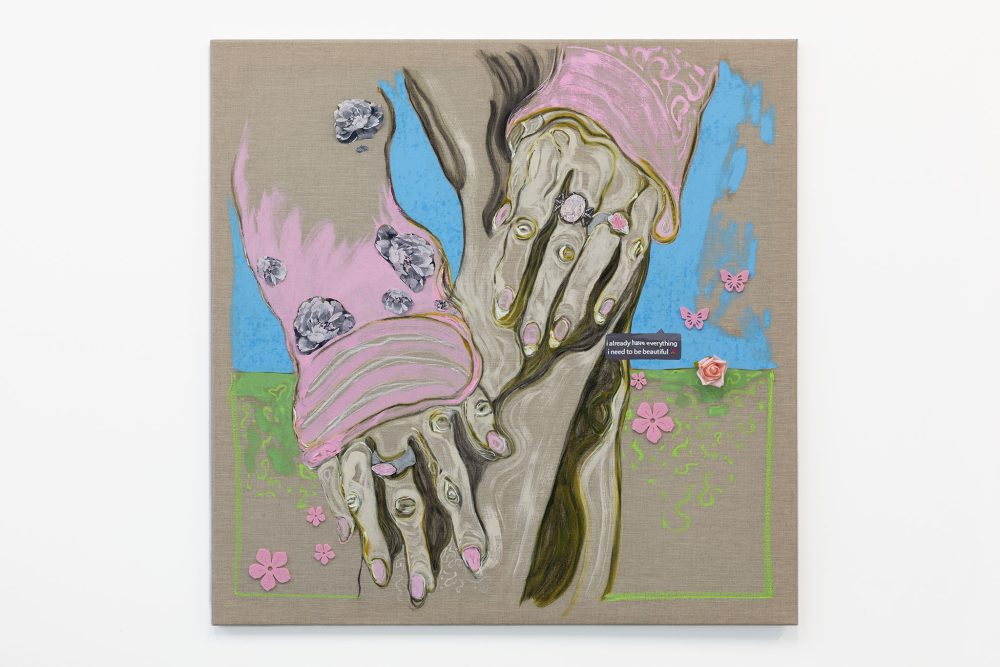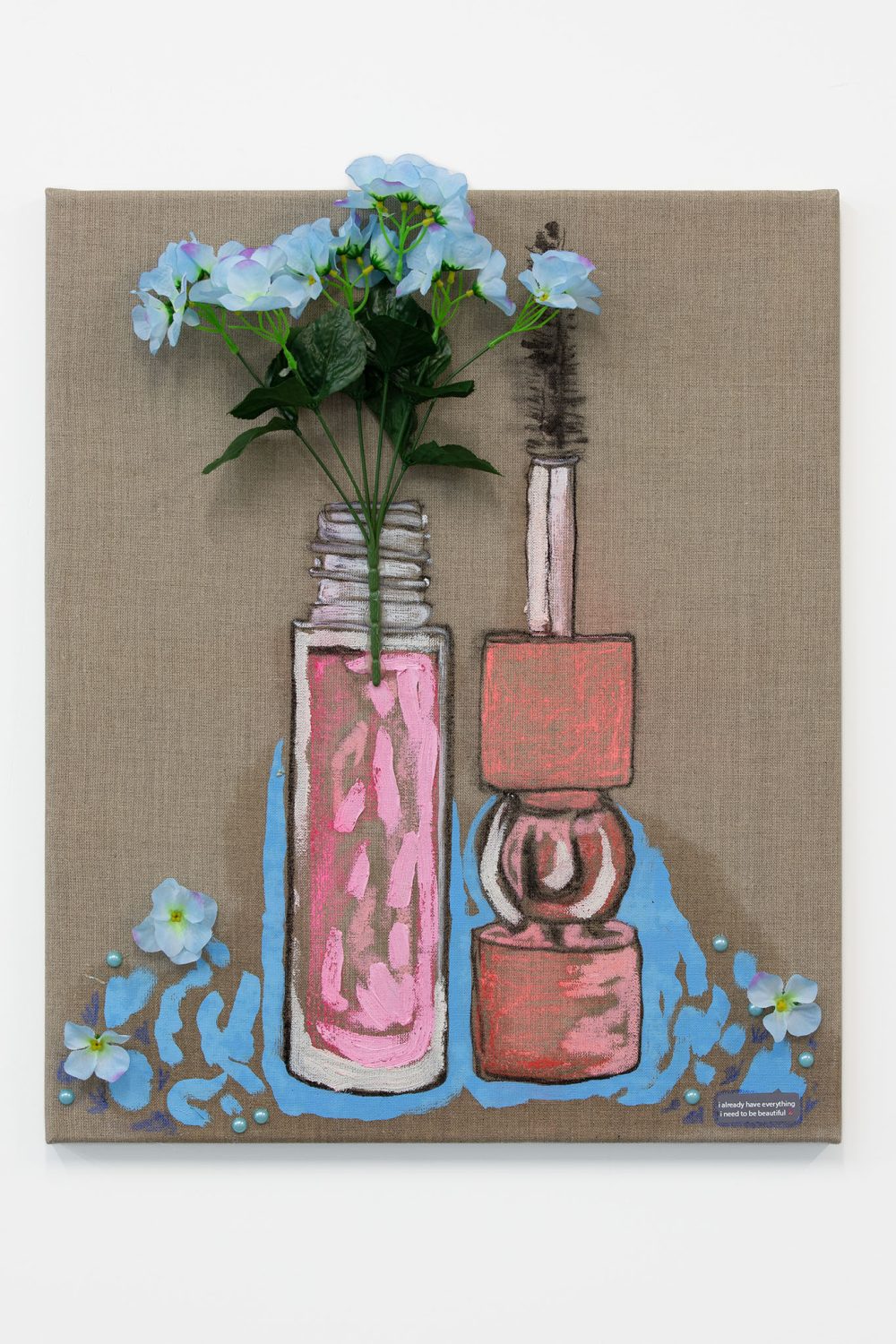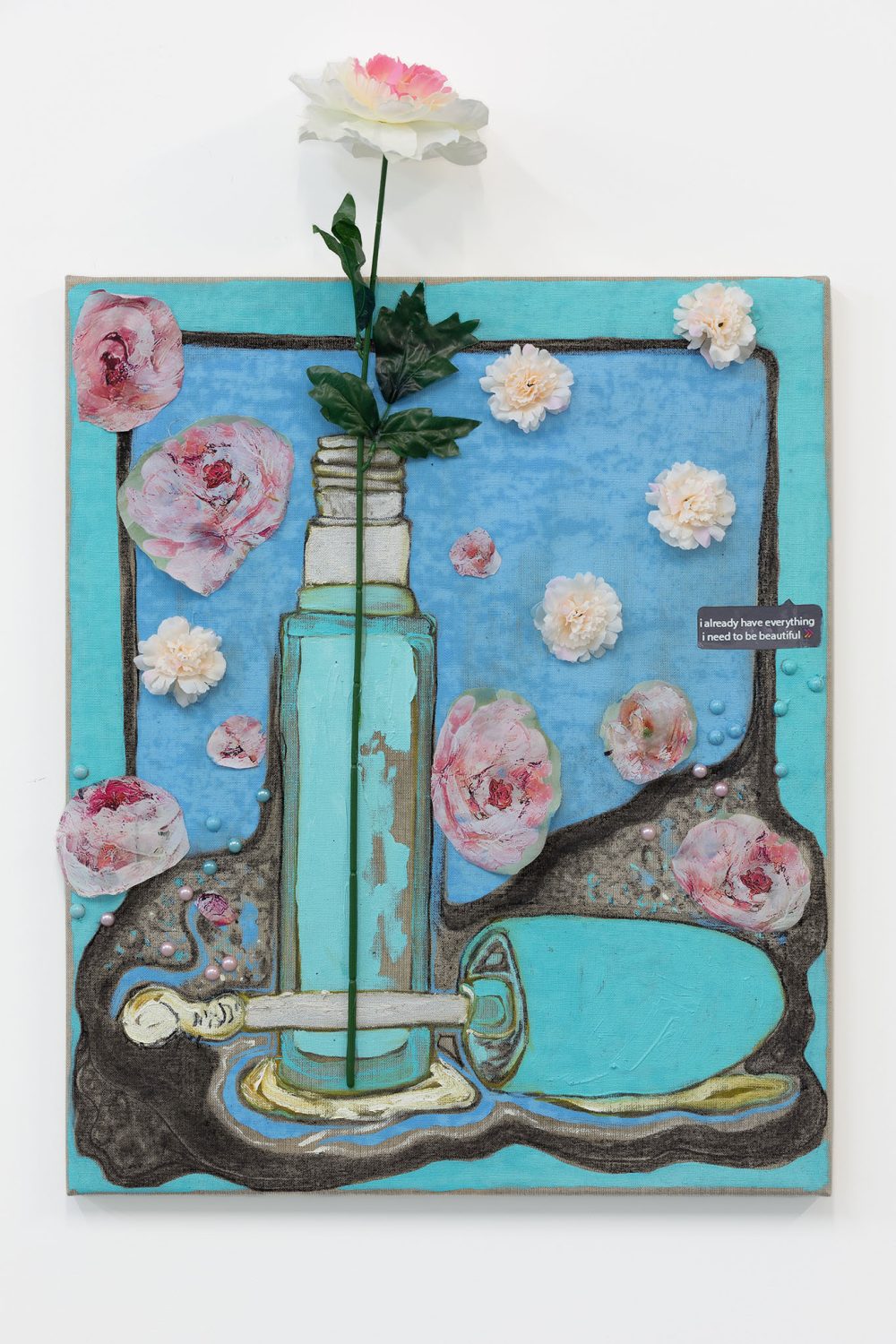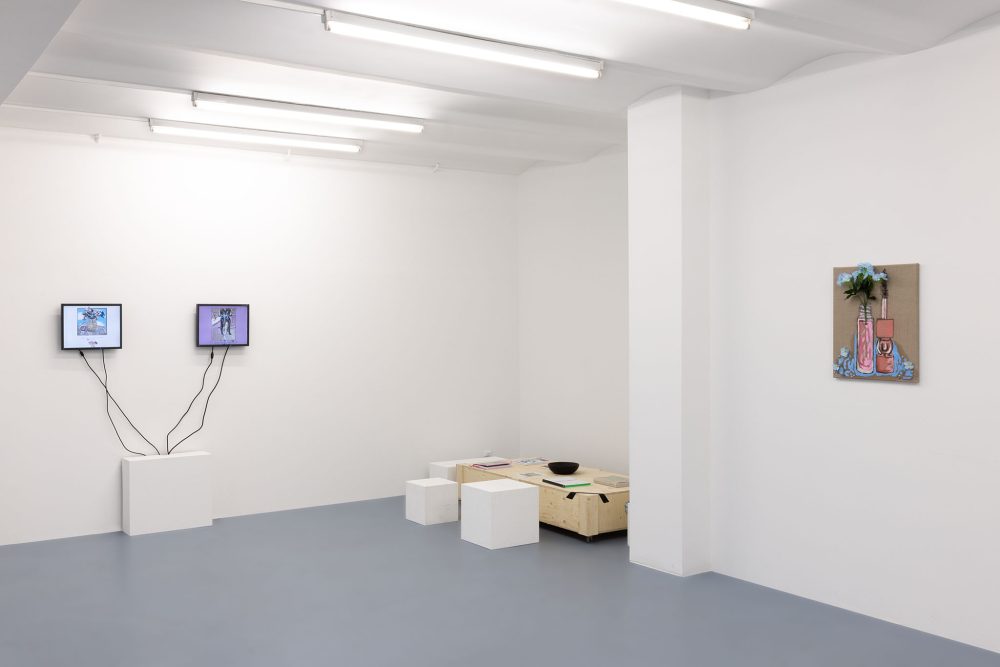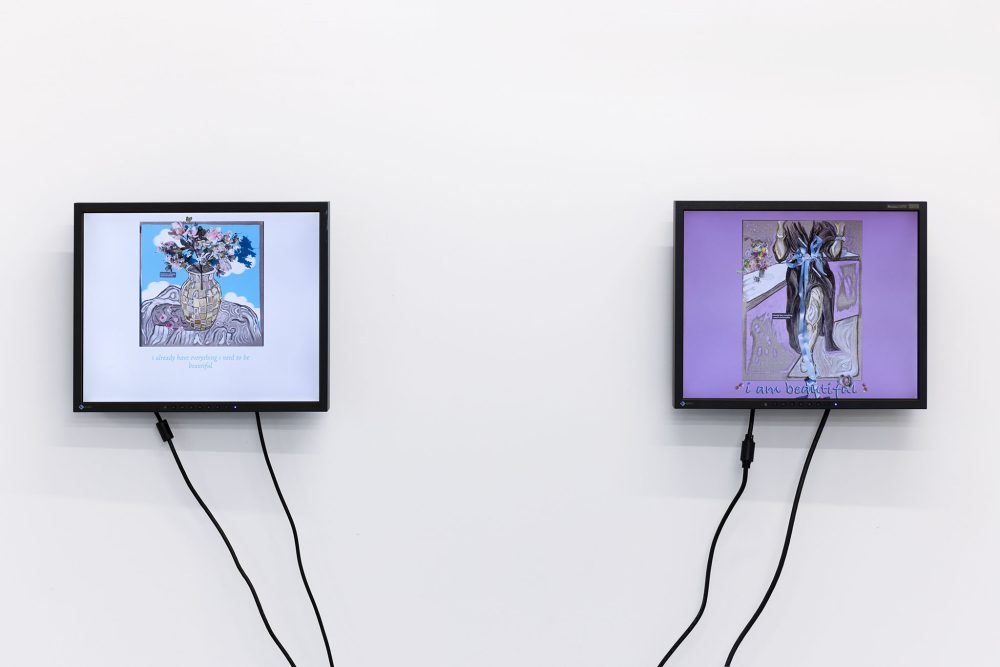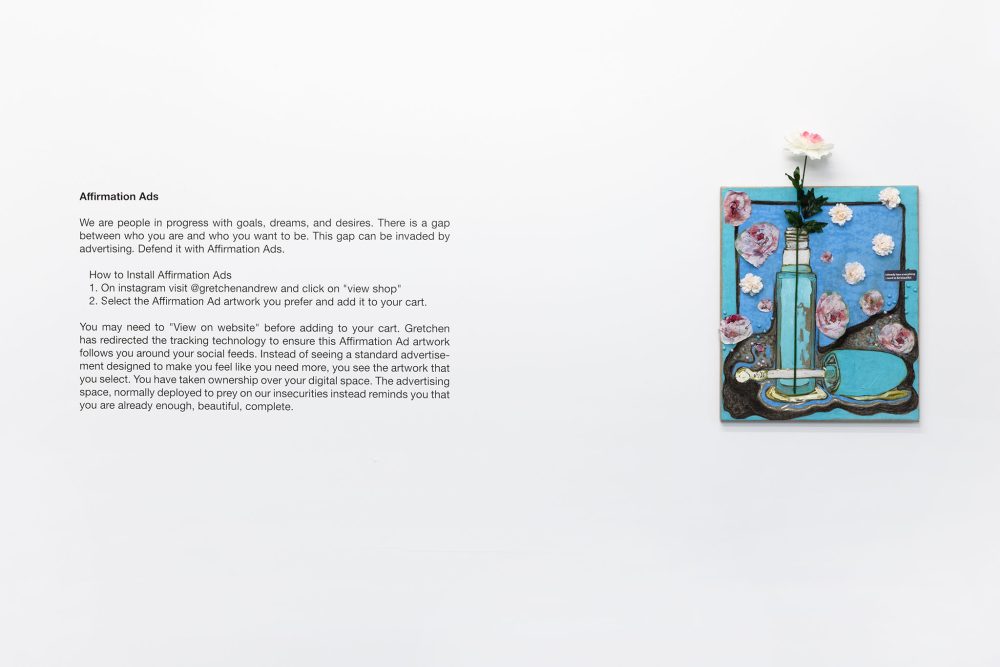Gretchen Andrew
Everything I need to be beautiful – Affirmation Ads
Everything I need to be beautiful
Opening: Fr 6. Mai, 18:00
Exhibition: 6. Mai – 11. Juni
Finissage: Sa 11. Juni, 18:00
I already have everything I need to be beautiful – Affirmation Ads
Die amerikanische Künstlerin Gretchen Andrew (*1988 Los Angeles) wurde von 2012-2017 in London von dem Künstler und Musiker Billy Childish ausgebildet. 2018 veröffentlichte das Victoria and Albert Museum in London ihr Buch „Search Engine Art“. Ihre Arbeiten wurden kürzlich in Fast Company, Flash Art, The Washington Post, Fortune Magazine, Monopol, Wirtschaftswoche, The Los Angeles Times und The Financial Times besprochen. Bekannt geworden ist die Künstlerin für ihre spielerischen Hacks wichtiger Institutionen der Kunstwelt und der Politik, darunter „Frieze“, „Whitney Biennale“, „Artforum“, „Turner Preis“ und „The Next American President“. In diesen digitalen Performances arbeitet sie an der Schnittstelle zwischen Kunst und Hacking. In ihren „Vision Boards“ fertigt sie Assemblagen an, die ihre erfolgreiche Zukunft innerhalb der Kunstwelt darstellen bzw. vorwegnehmen. Diese verknüpft sie mit gezielter Suchmaschinen-Optimierung von Schlüsselwörtern, was zur Folge hat, dass sie in bestimmten Suchkontexten, die oberen Positionen dominiert. Wenn man die Begriffe „Cover of Art Forum“ oder „The next American President“ bei Google eingibt, stößt man in den ersten Ergebnissen auf Arbeiten der Künstlerin.
Affirmation Ads
Ein fahrlässiger Click auf eine Online-Werbeanzeige führt in der Regel zu der unerwünschten Nebenwirkungen, dass man von dem anvisierten Produkt bis in die letzten Winkel des Internet verfolgt wird. Die Algorithmen vermuten ein Kaufinteresse und platzieren Werbebotschaften, die einen mit Hilfe ausgeklügelter Weiterleitungs-Systeme sogenannten Funnels bis zum Kaufabschluss begleiten sollen. Ermöglicht wird dies durch den sogenannten Facebook-Pixel, einem Tracking-Code, der in Werbeanzeigen installiert wird und das Verhalten des Nutzers bis ins Detail analysiert. In ihrem neuen Werkzyklus „Affirmation Ads“ manipuliert die Künstlerin diese werbebasierte Infrastruktur mit einem eigenen Internet-Shop und schleust Botschaften, die auf Ihren Bildern platziert sind, in die E-Commerce-Matrix ein. Wenn man sich dazu entschließt auf eine von Gretchens „Affirmation Ads“ zu klicken, schnappt die Falle zu. Die Algorithmen erkennen ein potenzielles Ziel, schalten in den Verfolgungs-Modus und platzieren von nun an die Werke der Künstlerin im personalisierten Internet. Der Unterschied besteht allerdings darin, dass sie den potenziellen Kunden nicht zu einem Kauf überreden möchte, sondern ihn im Gegenteil davon zu überzeugen versucht, dass er bereits alles hat, was man braucht, um glücklich zu sein. „I already have everything I need to be beautiful“ lautet die Botschaft, die auf ihren Bildern steht.
Das Internet hat sich in den letzten 10 Jahren derart entwickelt, dass es fast unmöglich geworden ist, sich dem Sog der Daten sammelnden Applikationen, die im Hintergrund aller Webseiten laufen, zu entziehen. Die Offenlegung der Datenschutzerklärungen und die damit verbundenen Einwilligung, die vor dem Besuch von Internetseiten angeklickt werden müssen, sind lediglich ein juristischer Pro-forma-Akt. Darüber hinaus geraten die Social-Media-Konzerne – in erster Linie Instagram und Facebook immer stärker in die Kritik. 2021 wurde ein internes Dokument von Facebook veröffentlicht, aus dem hervorging, dass sich die Unternehmen der schädlichen Auswirkungen ihrer Plattformen durchaus bewusst sind. Untersuchungen des Wallstreet Journal, der New York Times und zahlreiche akademische Studien konnten nachweisen, dass der exzessive Konsum sozialer Medien vor allem auf Jugendliche deutlich negative Auswirkungen hat. Gretchen Andrews Affirmation Ads sind eine Reaktion auf diese Entwicklungen und können als spielerische Form der Selbstermächtigung innerhalb der Online-Sphäre gelesen werden. Der Nutzer kann aus freien Stücken entscheiden, mit welchen Botschaften er für die nächste Zeit konfrontiert werden möchte und somit den eigenen Social-Media-Space selbst gestalten.
Mit Everything I Need to be Beautiful stellt Gretchen ihren zweiten großen Werkzyklus vor. Während sie sich mit ihren „Vision Boards“ auf die unkontrollierte Macht von Big Tech durch Google beschäftigte, wendet sie sich nun gegen die werbebasierten Strukturen von Facebook und Instagram und strebt eine Rückeroberung des digitalen Raumes an. Der Grundstein des Konzept sind real existierende Arbeiten in Öl auf Leinwand, die in der Galerie ausgestellt werden. Die Künstlerin erweitert das für sie charakteristische Repertoire an Plastik-Blumen, aufgeklebten Stoffen und Edelsteine, in Richtung einer figurativ malerischen Auseinandersetzung mit den Sujets, die auf tatsächlich existierenden Werbeanzeigen beruhen, und greift somit auf die Anfangszeit ihrer künstlerischen Tätigkeit bei Billy Childish zurück. In jedem der Ölgemälde findet sich eine Art Sprech- oder Produktblase, in der der Titel der Ausstellung I have already everything I need to be beautiful imprägniert ist. Sie reiht sich mit dieser Serie in die Tradition referenzieller Kunst ein, die mit Duchamps „Ready Mades“ begann und in der Pop Art ihren vorläufigen Höhepunkt erreichte. Das Referenz-Bild und die damit eng verbundene Strategie der Aneignung, hat sich jedoch – vor allem durch die Meme-Kultur – längst über den Bereich der künstlerischen Praxis hinaus als Form der Kommentierung von Alltagsgeschehen sowie politischer Strömungen etabliert. Jede Form der bildnerischen Aneignung muss immer auch vor dem Hintergrund eines Macht-Diskurses gelesen werden. Die Künstlerin beschränkt sich jedoch nicht darauf, die Ästhetik der Online- Werbung in die Sphäre der Kunst zu ziehen und diese somit aufzuwerten bzw. ihr eine gewisse Art Credibilty, garniert mit etwas Kapitalismuskritik zu verleihen. Vielmehr kapert und manipuliert sie mit dem entsprechenden technische Know-how eine der vermutlich mächtigsten und umsatzstärksten Infrastrukturen der heutigen Zeit, um deren Funktionsweise ins Gegenteil zu verkehren.
Während eine unbegrenzte Anzahl an Nutzern die Kunstwerke in ihrem Instagram-Feed installieren können, werden 2022 fünfzehn in Öl auf Leinwand realisierte Ads gezeigt werden – die ersten sieben in der Ausstellung Everything I need to be beautiful, die am 6. Mai in der Galerie Falko Alexander in Köln eröffnet wird. Darüber hinaus werden auch 2 NFTs zum gleichen Kontext entstehen.
I already have everything I need to be beautiful – Affirmation Ads
American artist Gretchen Andrew (b. 1988 Los Angeles) was trained in London from 2012-2017 by artist and musician Billy Childish. In 2018, the Victoria and Albert Museum in London published her book, Search Engine Art. Her work has recently been reviewed in Fast Company, Flash Art, The Washington Post, Fortune Magazine, Monopol, Wirtschaftswoche, The Los Angeles Times, and The Financial Times. The artist has become known for her playful hacks of important art world and political institutions, including „Frieze,“ „Whitney Biennial,“ „Artforum,“ „Turner Prize,“ and „The Next American President.“ In these digital performances, she works at the intersection of art and hacking. In her „Vision Boards“ she creates assemblages that depict or anticipate her successful future within the art world. She links these to targeted search engine optimization of keywords, resulting in her dominating the top positions in certain search contexts. If you type the terms „Cover of Art Forum“ or „The next American President“ into Google, you will come across works by the artist in the first results.
Affirmation Ads
A negligent click on an online ad usually leads to the undesirable side effect of being tracked by the targeted product to the far corners of the Internet. The algorithms assume that the user is interested in buying the product and place advertising messages that, with the help of sophisticated forwarding systems known as funnels, are supposed to accompany the user until the purchase is completed. This is made possible by the so-called Facebook pixel, a tracking code that is installed in advertisements and analyzes the user’s behavior in detail. In her new cycle of works „Affirmation Ads“, the artist manipulates this advertising-based infrastructure with her own Internet store and infiltrates messages placed on your images into the e-commerce matrix. When one decides to click on one of Gretchen’s „Affirmation Ads,“ the trap snaps shut. The algorithms recognize a potential target, switch into tracking mode, and place the artist’s works on the personalized Internet from then on. The difference, however, is that she doesn’t want to persuade the potential customer to make a purchase; on the contrary, she tries to convince him that he already has everything you need to be happy. „I already have everything I need to be beautiful“ is the message that is written on her pictures.
The Internet has evolved so much in the last 10 years that it has become almost impossible to escape the pull of data-collecting applications running in the background of all websites. The disclosure of privacy statements and the associated consent that must be clicked before visiting websites are merely a legal pro forma act. In addition, social media corporations – primarily Instagram and Facebook are coming under increasing criticism. In 2021, an internal document from Facebook was published, which revealed that the companies are well aware of the harmful effects of their platforms. Research by the Wall Street Journal, the New York Times and numerous academic studies have been able to prove that excessive consumption of social media has a significant negative impact, especially on young people. Gretchen Andrews Affirmation Ads are a reaction to these developments and can be read as a playful form of self-empowerment within the online sphere. Users can decide of their own free will which messages they want to be confronted with for the next period of time and thus shape their own social media space.
With Everything I Need to be Beautiful, Gretchen presents her second major cycle of works. While her „Vision Boards“ focused on the uncontrolled power of Big Tech through Google, she now turns against the advertising-based structures of Facebook and Instagram and strives for a reconquest of the digital space. The cornerstone of the concept is real-life works in oil on canvas exhibited in the gallery. The artist expands her signature repertoire of plastic flowers, pasted-on fabrics, and gemstones, toward a figurative painterly exploration of subjects based on actually existing advertisements, harkening back to the early days of her artistic practice at Billy Childish. In each of the oil paintings there is a kind of speech or product bubble in which the title of the exhibition I already have everything I need to be beautiful is impregnated. With this series, she joins the tradition of referential art that began with Duchamp’s „Ready Mades“ and reached its provisional climax in Pop Art. The reference image and the closely associated strategy of appropriation, however, has long since established itself – especially through meme culture – beyond the realm of artistic practice as a form of commentary on everyday events as well as political currents. Every form of pictorial appropriation must always be read against the background of a discourse on power. However, the artist does not limit herself to pulling the aesthetics of online advertising into the sphere of art and thus enhancing it or giving it a certain kind of credibilty garnished with some criticism of capitalism. Rather, with the appropriate technical know-how, it hijacks and manipulates what is presumably one of the most powerful and highest-turnover infrastructures of our time in order to reverse its mode of operation.
While an unlimited number of users will be able to install the artworks in their Instagram feed, fifteen ads realized in oil on canvas will be shown in 2022 – the first seven in the exhibition Everything I need to be beautiful, which opens on May 6 at Galerie Falko Alexander in Cologne. In addition, 2 NFTs will also be created on the same context.
Lives and works in Los Angeles * 1988
Ausbildung / Education
2010 B.S. in Information Systems (Honors), Boston College, Chestnut Hill, MA,
2006 – 2009: Intuit, Software 2010 – 2012 Engineer, Google, People Technology Manager
2013 – 2017: Billy Childish Studio Apprenticeship
SELECTED SOLO EXHIBITIONS
2021 Other Forms of Travel, Annka Kultys Gallery (represented), London, United Kingdom
2021 Trust Boundary, Francisco Carolinum, Linz, Austria
2021 Router at Panke Gallery, Berlin
2020 Future News, Monterey Museum of Art, Monterey, CA
2019 Not Not Not the Turner prize, Chelsea Cookhouse, London, United Kingdom
2019 Whitney Biennial 2019…Vision Board, LACDA, Los Angeles, CA
2018 Roughly Translated As: Ubuntu, A4 Gallery, Cape Town, South Africa
2017 Internet Imperialism, 18th Street Art Center, Santa Monica, CA
2017 How to How to How to draw, http://linkcabinet.eu
2016 Interior, Whitcher Projects, Inglewood, CA
2016 How to How to How to, Arebyte Gallery, London, United Kingdom
2015 Virtual Reality, De Re Gallery, Los Angeles, CA
2015 Pigment As Pixel, Hoxton Gallery, London, United Kingdom
2014 Painting As Interface, The White Building, London United Kingdom
SELECTED GROUP EXHIBITIONS
2021 Painting in the Digital Age, König Galerie Berlin
2021 Screenwalk, The Photographer’s Gallery & Fotomuseum Winterthur
2021 No Fear in Trying, Unit Gallery, London
2020 Real-Time Constraints, Arebyte, London, United Kingdom
2019 Art & AI, Swiss Re Centre for Global Dialogue, Rüschlikon, Switzerland
2018 Search Engine Art, V&A Museum, London, United Kingdom (book)
2018 Mozfest Open Web, Mozilla Foundation, London, United Kingdom
2014. Digital Futures, V&A Museum, London, United Kingdom
RESIDENCIES
2021 Salzamt, Linz Austria
2021 A4 Arts Foundation, Cape Town, SA
2021 National Gallery X, London, UK
2021 ScreenWalk, The Photographer’s Gallery London with Fotomuseum Winterthur
2020 Gazelli Art House Gazell.io, London, UK
2019 IsThisIt, London, UK
2018 18th Street Arts Center, Santa Monica, CA
2016 Whitcher Projects, Inglewood, CA
2016 Arebyte, London, UK
2014 The White Building, London, UK
PRESSE
L.A Weekly
FAD Magazin
Gallerytalk.Net
The Arts Gorgeous
ARTLAND
Vice
The Art Newspaper
CNN
Wirtschaftswoche
Monopol
Washington Post
The Californian
Museum Week Magazin
Dazed
Los Angeles Times
Hyperallergic
Los Angeles Magazine
Artnet News
Financial Times
TEACHING & LECTURES
2021
University of Chicago
Boston College
Willem de Kooning Academie,
Mozilla Festival
Ars Electronica
The British Computer Society at EVA London
Falmouth University
OK Center for Contemporary Art Austria
2019
Feminism & Artificial Intelligence Mozilla Foundation Festival
London
United Kingdom Painting and New Media
University of East London, London United Kingdom
Search Engine Art
Hennessy & Ingalls, Los Angeles, Lecture to new MA students
Chelsea College of Arts, London UK
Digital Now, Margate, UK
2018
Wikimania, Cape Town, South Africa
Lux Gallery, London, United Kingdom
The British Computer Society, London, United Kingdom
2017
Art and AI, Emmanuel College at Cambridge University, Cambridge, United Kingdom
The Photographer’s Gallery, London, United Kingdom
Vivid Projects, Birmingham, United Kingdom
2016
Moving Image New Media, The London Film School, London, United Kingdom
The International Conference on the GIF, University of Bologna, Italy
2014
Digital Utopias, The British Arts Council, Hull, United Kingdom
The British Computer Society, London, United Kingdom
New Media, University of the Arts London, London United Kingdom
2013
The British Film Institute, London, United Kingdom
It works like this:
1. Online or at Falko Alexander Gallery in Cologne, select the Affirmation Ad artwork you prefer
2. Gretchen has redirected the tracking technology to ensure this Affirmation Ad artwork follows you around your social feeds and within Facebook’s advertising network
3. Instead of seeing a standard advertisement designed to make you feel like you need more, you see the artwork that you select
4. You have taken ownership over your digital space
5. The advertising space, normally deployed to prey on our insecurities instead reminds you that you are already enough, beautiful, complete.
